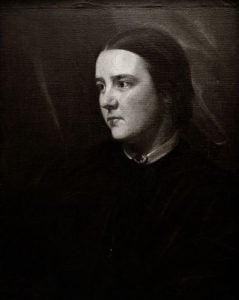Today we are meeting another trailblazing “first” for female physicians:
Sophia Louisa Jex-Blake, MD
As an English physician, teacher, and feminist, Dr. Jex-Blake and six other women (collectively known was the Edinburgh Seven) led the movement to allow  women a University education at a time when becoming a formally educated woman was frowned upon by society. After studying medicine at the University of Edinburgh in 1869, she became the first practicing female doctor in Scotland. She founded two medical schools for women in London and was a champion for the medical education of women.
women a University education at a time when becoming a formally educated woman was frowned upon by society. After studying medicine at the University of Edinburgh in 1869, she became the first practicing female doctor in Scotland. She founded two medical schools for women in London and was a champion for the medical education of women.
Beginning as a math tutor at Queen’s College, London (where she was enrolled), Sophia was transfixed on women’s education. To learn more about this, she traveled to the United States in 1861. Co-education in U.S. schools was of strong interest to her and while in Boston she met one of the country’s top female physicians, Lucy Sewell. Through her friendship with Dr. Sewell, she realized that she was meant to be a doctor.
Back in England, many disagreed with her pursuance of becoming a physician.
However, Sophia argued in an 1869 essay that the natural instinct of women in to concern themselves with the care of the sick. She stated that there was no objective proof the women were intellectually inferior to men.
In order to join a Scottish medical school, she need to gain fellow female proponents who would join her. Four women initially joined her (and two came later in the year) to make up the Edinburgh Seven. Once this group was gathered, they all applied and were accepted by the University of Edinburgh. This was the first British University to accept women.
By 1885, having been a practicing physician for few years, Dr. Jex-Blake opened a small five-bed ward. The Edinburgh Hospital and Dispensary for Women became the first hospital for women, staffed entirely by women.
Sophia retired after 17 years with her practice, and efforts of starting a school of medicine for women. She passed away in 1912.

Comments